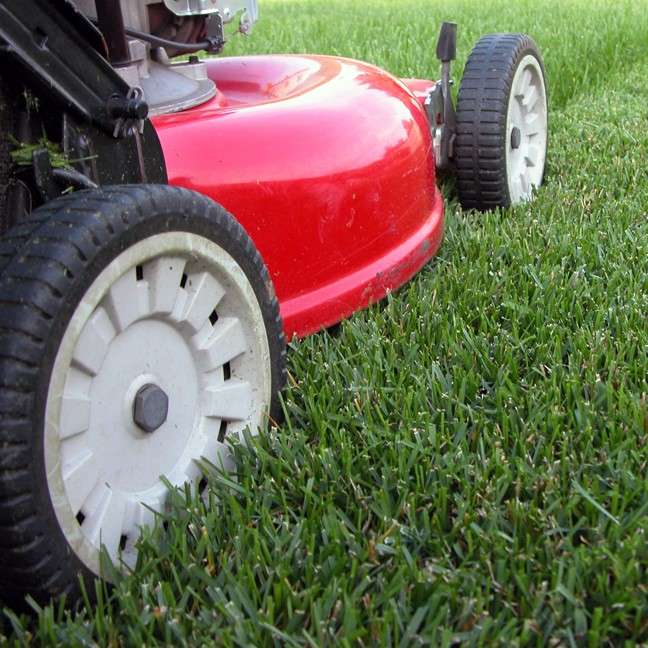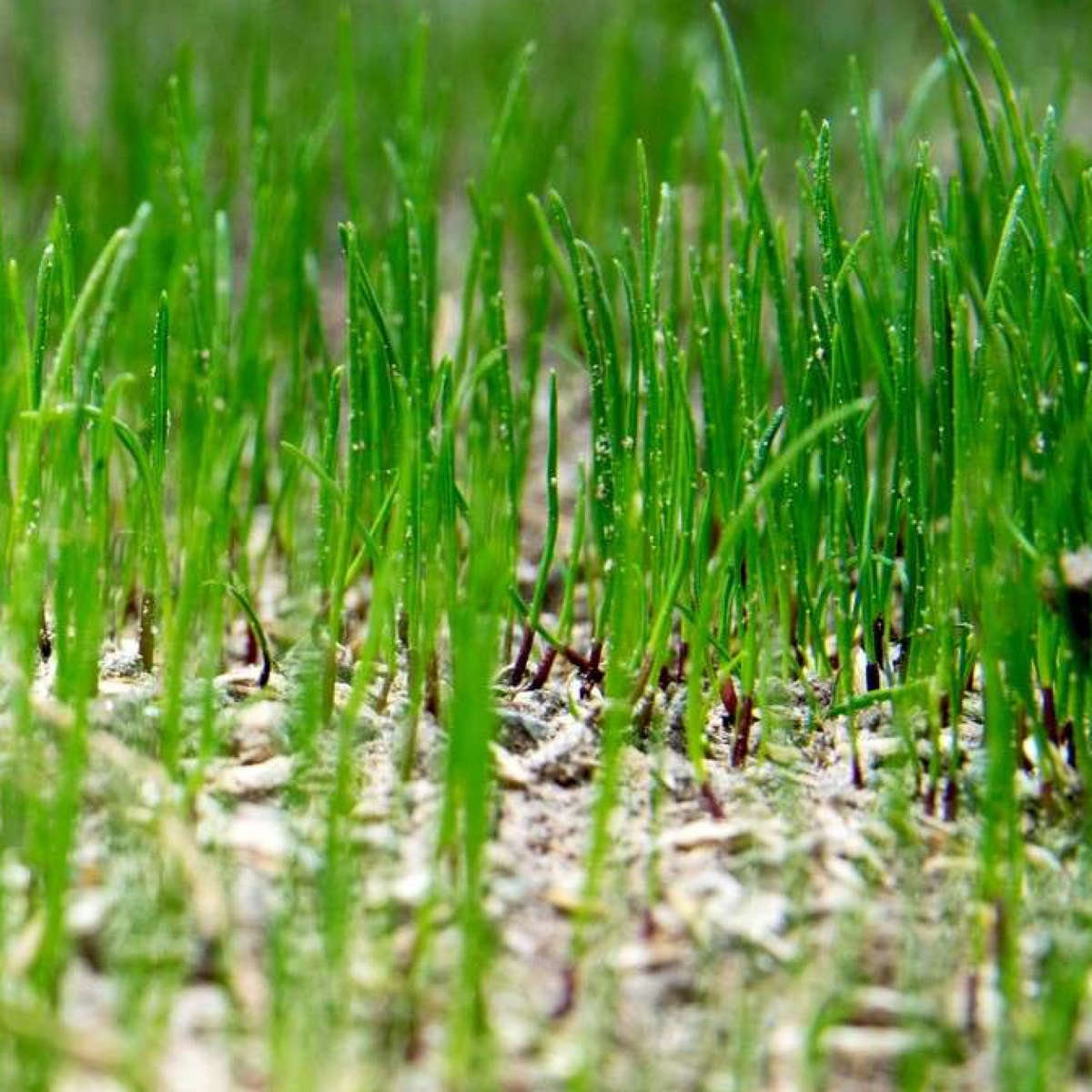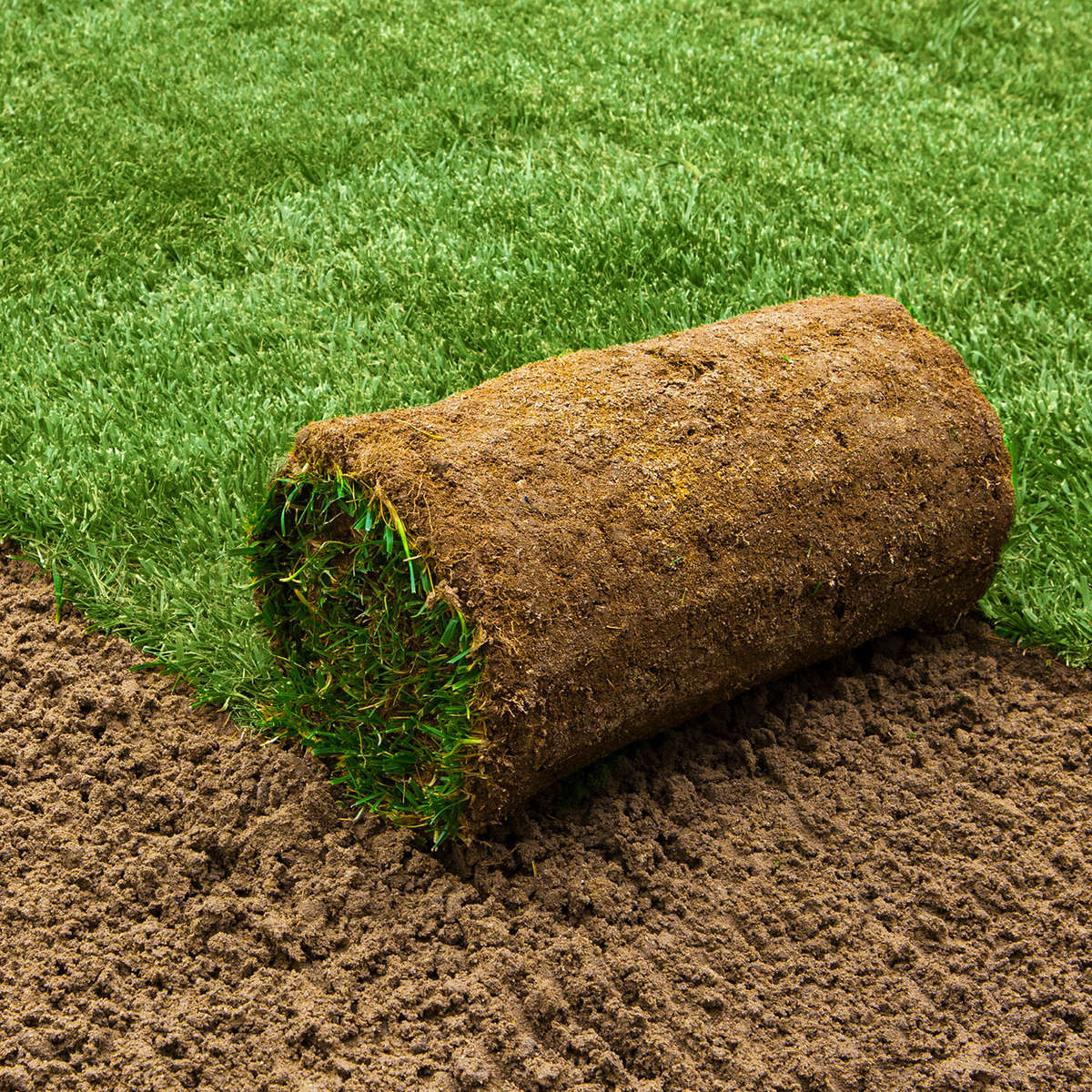
Lawn Care

Grow A Lush, Green Lawn
Temperatures are warming up and it's the perfect time to give your lawn some attention, so you'll be able to enjoy lush, green lawn this summer and beyond. Read on for lawn care tips and other helpful information for installing new sod or reseeding bare areas in your existing lawn. Talk with our in-store experts to find out the best solution to keep your lawn lush, green, and ready for play.
Spring Lawn Maintenance
- Leaves and Debris: The weather is warming up... time to head outdoors and spend some quality time with your lawn to remove leaves and debris that has accumulated over the winter season.
- Rake and Aerate: Rake to prepare the lawn for new growth and consider aerating to address soil compaction, which will allow air, water, and nutrients to get to the roots.
- Check Your Equipment: Tune up your lawn mower and ensure it is in good working order.
- Fertilize: To promote healthy growth and green blades, apply a slow-release fertilizer in early spring. Mark your calendar to apply another application of fertilizer in late spring to continue to support healthy growth and green blades.
- Stop Weeds Before They Start: Apply a pre-emergent herbicide to prevent weeds before they start. If a few weeds have already crept in, pull them now while soil is moist and the work is easy, or apply a post-emergent herbicide.
- Check for Pests: Keep your eyes open for common pests and disease. If you have questions, our garden gurus can recommend solutions.
- Irrigation: Remember to adjust your irrigation clock according to the weather. As temperatures warm up, you will need to increase irrigation run time.


Overseeding
Overseeding can be used to fill in bare patches, thicken existing grass, and improve overall lawn health:
- Dethatch your lawn prior to reseeding to remove dead roots and stems, allowing air, water, and nutrients to penetrate the soil.
- Choose a variety of grass seed that most closely matches the type of grass that you currently have, to ensure an even, uniform appearance.
- Spread 1/8″ depth of a top coat or seed cover across newly seeded areas to keep them moist while germinating. This also prevents seeds from being blown away by the wind or disturbed by birds.
- Keep the area evenly moist while the seeds are germinating.
- Wait at least a month after the seeds have sprouted to fertilize. Fertilize with Jonathan Green® Veri-Green® Lawn Fertilizer to promote deep and dense root growth.
Tip: Bermuda grass is a tough, warm season turf that goes dormant during the winter in our region. To keep it looking lush, overseed with Annual Rye in the fall.

Installing New Sod
Planning to lay new sod? Here are a few guidelines for preparation and installation:
- Kill and remove your existing lawn or weeds. We recommend removing them physically. If you choose to use herbicides, you will have to wait until the chemicals have dissipated from the site before laying sod.
- Prepare your soil. Amend the soil to a depth of four to six inches, which will help reduce drainage problems. Spread soil amendments and mix evenly with your native soil.
- Sprinkler irrigation is the best method for evenly distributing water onto a lawn. If you do not yet have a sprinkler system, we recommend that you install one at this stage. For a more water-efficient system, try using Hunter® MP Rotator Heads, which use 30% less water as compared to traditional sprinkler heads.
- Grade and roll the ground. Clear the surface of all debris. Apply a fertilizer that is high in phosphorous to quickly encourage healthy root growth.
- Lay sod and roll. After sod has been laid down, use a sod roller* to firmly press it to the ground, eliminating air pockets and ensuring the roots are in contact with the soil.
- Thoroughly water your new lawn, and keep it moist until it takes root, approximately 2-3 weeks.
*For your convenience, Green Acres Nursery & Supply rents sod rollers, free of charge, with a refundable deposit.
